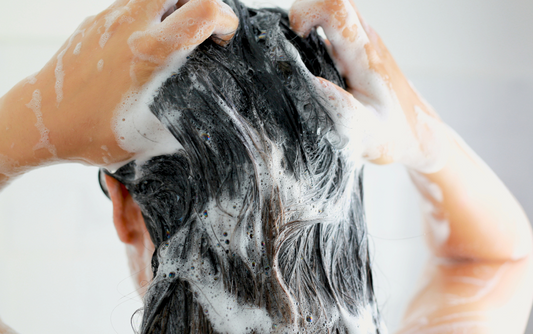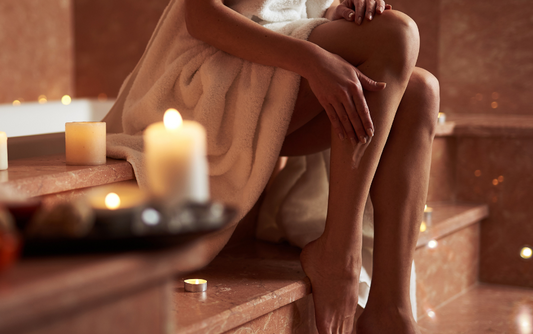How to Conduct a Candle Burn Test

You’ve read the blogs, watched the videos, followed the recommendations and the instructions to a T and you appear to have created the perfect candles. Now you’re all set to start selling them, right? Not quite! In order to protect yourself and your customers, there are a few more steps you need to take before you put your candles on the market.
The most important thing a candle maker can do to keep their customers happy and safe while also ensuring that they don’t end up with any liability issues is to conduct a thorough candle burn test on every candle recipe they make.
What is a candle burn test?
A candle burn test is something a candle maker does in a controlled environment in order to establish that a candle they have made burns properly and safely from start to finish.
It is highly recommended that initial test burns be done with just wax and a wick in the container you would like to utilise without adding anything else. By finding a wick that works best in your wax and container first, it can make it easier to figure out what might be causing problems in later testing once fragrance oil, dye and other additives are included.
You must complete a separate burn test for every different candle recipe you make. This means that any time a new container, wick, wax, fragrance or other additive is introduced into your candle recipe, a new burn test must be completed to ensure that the recipe burns correctly. Every single thing that goes into your candle will ultimately affect how it burns.
How to conduct a proper candle burn test
The first step for doing a candle burn test is to make and cure your candles. It can be frustrating for a candle maker to patiently wait for their candles to cure, but it is so important that they do. Especially when they are going to be completing a candle burn test.
Some waxes (like soy) need up to 2 weeks to completely cure. The wax will continue to harden more and more throughout the 14 days that follow after the candle is made. Since wax is softer at the start of the curing process than it is at the end, you won’t get a true and accurate result from your test burn until the wax has completely re-hardened.
Recommended Cure Times
-
Vegetable waxes: 14 days
-
Paraffin waxes: 1-2 days
-
Wax blends: 1-14 depending on the dominant waxes in the blend
A candle burn test should be performed in a safe and controlled environment. It is best to use a room that is not too large, does not have a lot of air flow and remains around typical room temperature of approximately 68F.
A candle burn test is generally done in 4 hour intervals, so you will need to have at least 4 hours set aside to supervise the test. As I’m sure you know, a burning candle should never be left unattended. Make sure that you have recorded all the vital details about each candle recipe being tested for future reference (wax, wick, fragrance type and amount, dye type and amount, etc).
Place the test candles on a tray that would be able to hold any melted wax that might spill if the container cracks, shatters or tips over. You should leave a minimum of 8” between each candle being burned. Before lighting the candle, the wick should be trimmed to around ¼” long.
Allow the candle to burn for a maximum of 4 hours at a time. It should have adequate time for the melt pool to re-harden after each burn before another interval is started (5-6 hours). You will continue this process until the candle either fails or runs out of wax.
Things to watch for during a candle burn test
There are some essential things that you will need to take note of when you are conducting a candle burn test. This information will tell you whether your candle works well or you need to adjust your candle recipe accordingly.
Flame size and movement
A properly wicked candle will have a flame that is around 1” tall from the bottom arc to the pointed tip. There are some candles that it is normal for their flame to be up to 2” tall, but for the average container candle 1” is ideal.
If you notice that your flame is smaller than 1” or that it extinguishes itself, this could be an indication that your wick is too small, not made from the right material for the ingredients used or there is something in your wax that is stopping the necessary amount of fuel from getting up the wick to the flame. In this case, you will need to either choose a larger wick or select a different type of wick for your next batch.
If your flame is larger than 1”, you most likely have selected a wick that is too big for your recipe. In this case, you will need to use a smaller wick size the next time you make this recipe.
It is normal for there to be slight movement from the flame, however, you don’t want it to be flickering and dancing around wildly. This would lead me to believe that either there is a draft in the room you are testing in or there is something in the wax that is interfering with the combustion process.
The first thing I would do is check for a draft source and perhaps move your testing to a different location. If that doesn’t help, I would consider looking at the ingredients in your recipe. Adding things like mica, glitter, botanicals and certain fragrances have been known to interfere with combustion and cause excessive movement in a flame.
Size of the melt pool
When you have selected the right wick for your candle, the melt pool around each wick should grow by at around 1” per hour in diameter and should cover the entire surface of your candle by a maximum of 4 hours. If your wicks start to create a tunnel and the melt pool never reaches the edge of your candle, this indicates that you have underwicked your candle and you need to size up.
It is completely normal for there to be a thin residue of wax on the side of your container after you have burned your candle. There is also a good chance that heat created by the subsequent burns will help to completely melt it away. If you notice a layer of wax around the outside of your candle that remains burn after burn, you may want to think about going with a larger wick.
On the other hand, when your melt pool grows at a much faster pace than 1” per hour and melts to a depth greater than 1/4” down your candle during a single burn (4 hours), you should consider downsizing your wick. With some extremely soft waxes like coconut it can be normal for the melt pool to grow faster than the 1” per hour, but you don’t want the depth to be more than the ¼” by the end of the 4 hour burn cycle.
Soot
If you’re burning something, there is bound to be some soot, it’s just the nature of the beast. A small amount of soot is nothing to get worked about. Having said that, seeing plumes of soot streaming from your candle flame is definitely a sign that there is something off with your candle recipe.
There are a few different things that can cause an excessive amount of soot. You may have used a wick that is too large, added too much fragrance load or it could just be the particular fragrance oil you used is prone to soot more than others. A draughty room can also cause the flame to release soot.
Temperature
The container being used for your candles should not reach a temperature of greater than 140 F. If it exceeds that temperature, you have overwicked your candle and you need to downsize your wick.
When the outside temperature of your container goes above 140 F, you not only risk your customer burning themselves if they happen to touch it, but the container is also at a higher risk of shattering from the heat. This is exasperated even more if there happens to be a weak spot in the glass or even worse, a small crack. All glass containers need to be examined for cracks prior to making your candles for this very reason.
Mushrooming
Carbon balls or mushrooming can be normal, and you will most likely notice a small one on the tip of your wick by the end of a 4 hour burn. It becomes a concern when the mushroom is larger than 5mm, is bending over into the wax or is breaking apart and falling into the melt pool. This might be a sign that you have overwicked your candle and need to use a smaller wick.
Other things that could cause a large carbon ball include:
- The wick wasn’t trimmed to ¼” before the burn was started.
- The fragrance or fragrance load. It is possible for certain fragrances and fragrance loads to interfere with combustion.
- The wick is not compatible with the candle recipe. There is no guarantee that one wick will work in every candle recipe you make.
Scent Throw
You may be wondering why such an important aspect of a candle is listed last. The simple answer… safety first! I can assure you that a customer could care less that a candle smells amazing if it has shattered and spilled liquid wax all over the place or worse, started a house fire. Once you have established that a candle burns safely, only then should you start digging deeper into how well it performs in terms of scent throw.
Scent is an incredibly subjective thing. You could have 3 different people smell the exact same candle and one could love it, one might say they barely smell anything and the last could tell you that it’s so overpowering they can’t stand to be around it. You’re never going to be able to please everyone, so don’t lose sleep trying.
When you do a candle burn test for scent throw performance, you want to make sure that you are only testing 1 candle at a time so that you get a true reading of how strong it is. I recommend doing it on a day that your nose hasn’t been inundated with many other scents (ie a candle making day). It is also helpful to give some candles to friends and family members to test for you as well to get a few different opinions on how strong the scent is.
Something to remember is that every time you burn your candle, the wax in the melt pool is heated up to release the fragrance. Once the fragrance has been released, that wax is no longer scented. That means that in future burns the flame will need to first melt the wax from your previous burn(s) before it is able to melt more of the scented wax below. That is why you will find that the scent takes longer for you to notice for every successive burn.
This is also another reason why you don’t want to overwick your candle. A wick that is too big can melt the wax well over ¼” deep. The first burn of an overwicked candle might have an amazing scent throw, but every burn after that would take a very long time to get to more of the scented wax.
It can be a bit of a challenge to find a happy medium between a hot enough wick to throw the scent well, but not too hot that it ruins the scent throw for the remainder of the candle’s burn time. However, it can be done!
The Power Burn Test
A power burn test is when you burn your candle incorrectly to the extreme to see how well it holds up. This includes not trimming your wick before lighting, doing the test in a big draughty room and allowing it to burn for much longer than the 4 hours recommended. Obviously, supervising a power burn test is incredibly important.
Some don’t believe that this type of testing is necessary and feel that it is more valuable to just educate your customers on how to burn your candles properly. I personally think that both are equally beneficial. After all, there is no guarantee that everyone will follow your instructions or the caution label every time they use your candles.
Educating customers on candle safety is an absolute must; however, knowing from experience that your candle is able to perform well even under the most intense circumstances can offer some piece of mind to a candle maker as well.
Final thoughts
As a candle maker, you are creating a product that you are encouraging customers to take home and light on fire. Therefore, it is your responsibility to make sure that the controlled fire that is created with your product remains controlled and safe throughout the duration of its use. The only way to do this is by thoroughly testing the product yourself. Don’t cut corners, test, test, test!
Fragrance Oils and Health Products Our fragrance oils are intended for external use in candles, diffusers, and some cosmetic applications. They are not to be ingested, inhaled, or applied directly to skin without proper dilution. Health Canada requires a Natural Product Number (NPN) for the sale of any product making health claims or intended for therapeutic use. It is your responsibility to ensure your final product formulation complies with all applicable regulations and obtains the necessary NPN certification before sale.
Fragrance oils, when incorporated into health products, may require additional safety testing to ensure their suitability and interaction with other ingredients. We strongly recommend conducting independent testing by a qualified laboratory to confirm the safety and efficacy of your final product formulation. By purchasing this product, you agree to assume all responsibility for its proper use and application. We shall not be held liable for any misuse, claims, or damages resulting from the use of this fragrance oil in a health product.





